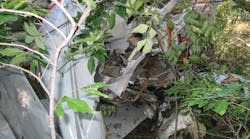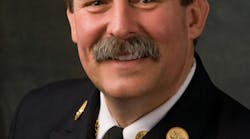Dec. 14--The San Francisco Fire Department is sending airport-based commanders to special training and has put all its airport firefighters through a 40-hour basic course on dealing with plane disasters in the aftermath of its Asiana Airlines crash response that left a survivor dead.
After the teenage passenger was run over by two fire rigs battling a fire on the Boeing 777 at San Francisco International Airport, The Chronicle learned that the three commanders in charge of the crash response had never taken disaster training that federal rules require of all rank-and-file firefighters stationed at U.S. airports.
Under a change that a high-ranking fire official disclosed this week, the Fire Department now will send top firefighters at the airport -- those with the rank of lieutenant, captain or battalion chief -- to a 40- to 80-hour course specially designed for those who may be in command at a plane crash site.
"There are many lessons to be learned here," Assistant Deputy Chief Dale Carnes, who oversees the Fire Department's airport operation, told a National Transportation Safety Board hearing this week that heard testimony on the July 6 crash.
One of the lessons concerns firefighter training, he said.
Texas training
Under the changes announced by Carnes, airport-based command officers will enroll next year at the Fire Training Research Center at Dallas-Fort Worth International Airport.
Mike Foster, an assistant fire chief at the Texas airport who runs the school, said command training is a "missing link" in the nation's aircraft rescue and firefighting structure.
"We are one of the very few that have advanced training past the firefighting level," he said. "We teach command and control tactics and strategies, applying the same tactics used on large structural fires to an aircraft incident."
In addition to commanders' training, Carnes announced a change in how the Fire Department provides basic instruction on aircraft disasters to rank-and-file firefighters.
Federal airport regulations require that firefighters who may have to respond to crash scenes undergo basic training, covering everything from a live-fire disaster drill to briefings on the characteristics of various commercial aircraft.
In-house effort
Up until the crash, the San Francisco Fire Department had its own in-house training program. Many departments in other cities, however, send their firefighters to the Dallas-Fort Worth center or similar programs where the training is provided by specialized instructors.
That will now be San Francisco's approach, Carnes told investigators. After the crash, the department sent 80 firefighters and paramedics assigned to the airport to a basic training course, he told safety board investigators. The Texas instructors came to San Francisco to teach it in September and October.
Questions about firefighters' training emerged after the 16-year-old Asiana crash survivor, Ye Meng Yuan of China, was killed by one of two Fire Department rigs that ran over her as she lay in the fetal position near the plane. The basic training course includes instructions on navigating the large, specialized foam-spraying rigs around crash scenes without damaging evidence.
Before the crash, it had apparently been years since the Fire Department sent any firefighters to out-of-town basic training. The department stopped the practice sometime after an incident in which firefighters returning from training in Utah smuggled a bottle of wine onto a plane and got into a dispute with a flight attendant, Fire Commission records show.
Four firefighters, including a lieutenant, were suspended in 2001 because of the incident, the records show.
Defending firefighters
Among the few firefighters at the Asiana crash scene who had undergone the 40-hour course was Lt. Christine Emmons, a 24-year department veteran who has been at the airport for a decade. However, Emmons was also one of the three firefighters who saw Ye on the runway and concluded she was dead without checking her vital signs, according to federal safety board interviews with firefighters. The two rigs then ran over the teenager after she became obscured by foam.
They acted correctly
Reached by phone Friday, Carnes declined to comment. In his interview with safety board investigators, however, Carnes indicated that Emmons and the others had acted correctly.
"He said that the personnel who saw her (Ye) described her using terms like unconscious, unresponsive, apneic (not breathing), lifeless, etc.," according to a safety board summary of Carnes' interview. "In their professional opinions as firefighters, EMTs and paramedics, she appeared to them to be dead. There were known victims in the airplane, and they were in rescue mode and needing to get those people off as quickly as possible."
According to investigators, Carnes added that "firefighters were trained to try to maintain anything that was a potential crime scene and to disturb things as little as possible, including obviously deceased victims. He thought that came into play in this accident as to why his personnel did not move the deceased victim."
Regrets the 'insult'
In his testimony this week, Carnes hinted that Fire Department officials still believe Ye was dead before she was run over, saying, "We definitely regret the additional insult to the deceased."
San Mateo County Coroner Robert Foucrault, however, concluded that Ye was killed not by the crash, but by a fire rig. He said in an interview that his office's autopsy had found "overwhelming scientific evidence to prove that she was alive when she was struck."
Asked during Wednesday's safety board hearing what lessons the Fire Department had drawn from the incident, Carnes said officials were working on improving the system to track "nonambulatory" disaster victims.
"We are developing strategies to lessen the potential for firefighting vehicles impacting accident victims," he said, without being specific.
Jaxon Van Derbeken is a San Francisco Chronicle staff writer. E-mail: [email protected]
Copyright 2013 - San Francisco Chronicle







